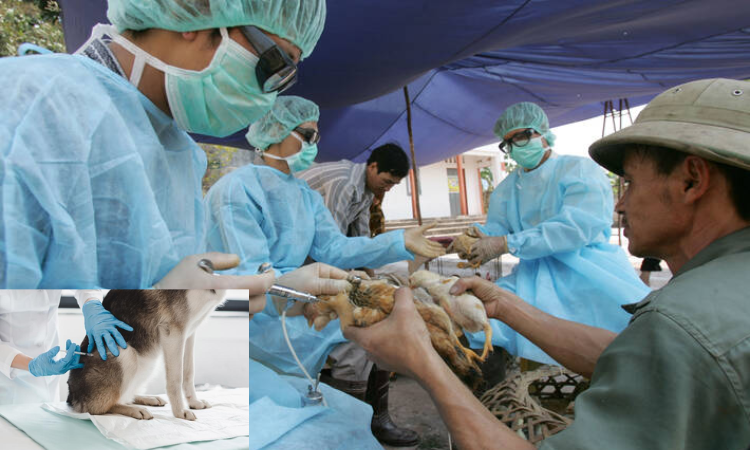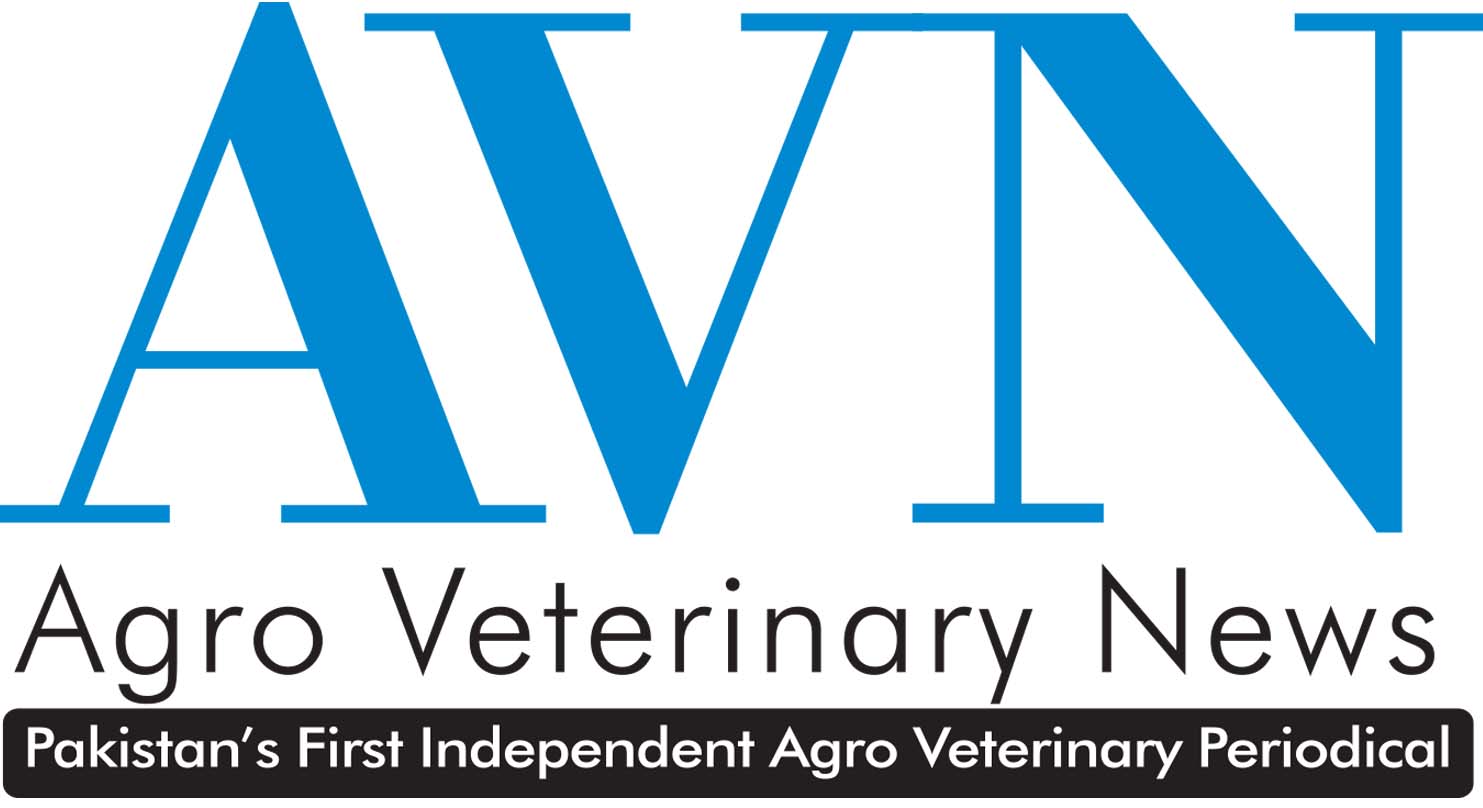Dr. Muhammad Khan1, M. Umair Asghar2, Dr. Muhammad Ali1, Dr. M. Hammad1, Dr. Muhammad Mohsin3
- Institute of Animal and Dairy Sciences, UAF.
- University of Veterinary and Animal Sciences, Jhang campus.
- Department of Veterinary Parasitology, UAF.
Corresponding author: Dr. Muhammad Khan (DVM, RVMP, MSc. Hons Animal Nutrition)
Email: mkhancvasian468@gmail.com
Introduction
Poultry industry is one of the most vibrant and well established sectors which was established in 1962 in Pakistan. Currently it contributing about 26.8% in total meat production of Pakistan. It also has about 5.76% share in agriculture sector and 1.26% in national DPG. Poultry in Pakistan is making a significant contribution to fulfil the protein requirements of Pakistani people at affordable cost. Pakistan poultry industry also producing about 8.19 Million Tons feed annually. The common feed ingredients which are being used in poultry feed are originated either from plants or animals. However, the compositional characteristics and price determined the inclusion level and selection of each ingredient. These ingredients are composed with macro (carbohydrates, protein and fats) and micro (vitamins and minerals) nutrients. On the basis of macro nutrients these ingredients could be named as energy or protein source. The major energy sources which are being used in poultry feed industry are grains, grains byproducts, fats and oils while, intact grains are more preferred due to sole composition and cost effectiveness. The micro nutrients are required in minuet quantity: but, their importance can’t be neglected due to key role in metabolism, cellular functions, diseases prevention and proper immune functioning. The minerals are the most concerned micro-nutrient in grains and seeds based formulation. The considerable amount of phosphorous is present in grains but its major portion is founded in bound form (phytate) and are not available for digestion. About two third portion of total phosphorous is founded as phytate in all plant originated ingredients. Phytate also having anti-nutritional factor as it binds with certain other minerals such as iron, calcium, magnesium, zinc and copper and makes them unavailable for monogastric animals as well as for poultry. In previous years, inorganic phosphorous was supplemented in feed to fulfill the phosphorous requirements of poultry. Currently increasing trend of inorganic phosphorous replacement with phytase has been observed in feed industry. Supper dosing of phytase reduced the cost of the feed by decreasing the cost of external phosphorus supplementation and by improving the bioavailability of internal phosphate from phytate.
Phytate and its derivaters
Actually phytate is a hexaphosphoric acid which is an ester of inositol and commonly known as phytic acid in literature as well as in industry. Chemically it is an organic compound which poses myo-inositol 1, 2, 3, 4, 5 and 6-hexa dihydrogen phosphate in its structure. When its breakdown took place in plants, it produce its different catabolites such as inositol penta (IP5), inositol tetra (IP4) and triphosphate. These catabolites still entrapped the phosphorous molecules and shedding of such phosphorous took place via excreta in monogastric animals/birds as these animals as well as poultry are phytase deficient. Possibly this excess excretion of the phosphorous could contribute into environmental pollution and could lead to eutrophication.
Table: 1 Minimum and maximum level of phytate phosphorus in commonly used ingredients in Pakistan poultry industry
Principal of phytic acid breakdown
The end products of phytic acid after accruing a series of dephosphorylating reactions are free phosphate and myo-inositol. Two phytate molecules also formed chelates with zinc and iron and resulted decreased their bioavailability. The phytase is the key enzyme that initiate the phosphorous hydrolysis at carbon 1, 3 or 6 of phytate inositol ring and resulted released the chelated minerals such as calcium, zinc and iron after removal the phosphate group. During breakdown of phytate by phytase hydrolysis: a series of pentakis-, tetrakis-, trikis-, bis- and mono-phosphate products are formed respectively at each step.
Phytase and its classification
The classes of phosphatases enzymes which catalyze the sequential hydrolysis of highly bounded phosphorus complex named as phytate into inorganic phosphate are collectively named as phytase. Currently this class got well reputation in animal feed industry as they are potentially being used as monogastric feed additive in formulation. The International Union of Biochemistry (1979) broadly classified these enzymes into two classes on the basis of initial attachment and release of first phosphate group in phytate molecule. Those phytase enzymes which initiate hydrolysis of phytate group which attached at 3th number carbon are united under the classe of 3-phytase: while, those phytase enzymes which causes the hydrolysis of phosphate group attached at 6th carbon are classified as 6-phytase. On the origin bases, phytase enzymes could be bacterial, fungal or plant originated phytase. The bacterial and fungal phytase are actually 3-phytase while, plant originated phytase are 6-phytase. The remaining five phosphate groups hydrolyzed randomly by phytase from phytate molecule structure after initial hydrolysis either from 6-corban or 3-corbon phosphate.
Sources of the phytase
Phytase has been purified and characterized from different microbial as well as plant sources for industrial purpose. From microbial sources, fungus source is the pioneer and well reputed. About more than 200 species of Aspergillus are very well reputed as they produced a good quantity of extra cellular phytase. The phytase firstly purified from A. ficuum and was investigated for commercial purpose. Aspergillus niger is the most potent source for the extra cellular phytase in recent years. Many bacteria are also a good source of Phytate degrading enzymes. The bacterial species such as Bacillus, Klebsiella, E.coli and Pseudomonas has earned name in phytase production industry. From plant sources maize, barley, canola seed and rye are mostly used to produce the phytase at commercial level. The phytase could also be isolated from the mucosal layer of monogastric animal’s intestine.
Phytase characteristics
The potential of any enzyme for industrial application is determined by its specific characteristics. These characteristics on which enzymes selection is made for industrial use are pH sensitivity, thermostability and substrate specificity. These characteristics are highly determined by the source of enzyme, tertiary structure, molecular mass and cofactor requirements. The temperature specifications for phytase activity varies from 24 to 81 °C. Phytase which obtained from Thermomyces lanuginosus (thermophilic fungus) works properly at 65 °C. Phytases obtained from fungal species such as A. fumigatus and A. niger (Mesophilic fungus) have optimum activity a 37 °C and 55 °C respectively. The optimum temperature for activities for phytase obtained by Thermoascus auranticus is 56 °C and it resides its 80 % efficiency even after raising the temperature up to 70 °C. Another fungus A. fumigatus produced highly thermostable phytase which can bear upto 100 °C temperature for 20 min with only 10 % loss of initial activity. Bacterial phytase from B. subtilis war. Notto showed 100 % activities at 60 °C. At 4.5-6.0 pH, phytases remain active. Phytases show dramatic decline in stability, when pH value decrease below than 3.0. The pH greater than 7.5 also effects the stability of the phytase. The fungal originated phytase are highly stable at 4.5-5.5 pH while, 6.5 to 7.5 is an ideal pH for bacterial originated phytases. Recently another class of phytase has been obtained from plant sources and commercially named as alkaline phytase as they show optimum activities at pH 8.0. The number of amino acid present in enzyme protein structure as well as sequencing of these amino acids determined the substrate specificity of any enzyme. Phytases have broad substrate specificity with highest affinity for phytate. Phytases are actually pure protein with molecular weight ranging from 40 to 500 kDa. A. ficuum phytase contained 594 amino acids.
How we can determined the phytase activity?
The most practiced method to evaluate phytase activity is quantifying the phosphate amount liberated by action of respective phytase.
Industrial application of phytase
The main idea behind industrialization of phytase is the phytate degradation from feed as well as food sources. During phytate degradation, phytase releases the phosphate from phytate. This phosphate could be bioavailable as phosphorous source to monogastric animals and resulted reduction in need of phosphorous feed supplementation could took place. For this objective, currently phytase is being used in poultry industry in two ways. The first option is that, phytase could be used as replacer of inorganic phosphorus which is being used as feed supplementation. However, the pH, temperature and other conditions in stomach as well as intestine are not optimal as phytase required for its activities. The second method is the pretreatment of the feed ingredients with phytase and former becomes more attractive. The solid state fermentation of canola meal with A. niger NRRL 3135 had shown increase phytate phosphorus bioavailability. Phytase is being incorporated into commercial poultry, swine, and fish feed at large scale in current era.
Conclusion
From the above discussion, we can easily conclude that phytase supplementation in poultry feed not only enhance the phosphorous availability from phytate source but also improve the cost effectiveness of feed production by decreasing the external inorganic phosphorous supplementation in feed. Recently, increasing trend has been observed in phytase supplementation in Pakistan feed industry and it is being named as a remarkable positive contribution in this sector of Pakistan.






